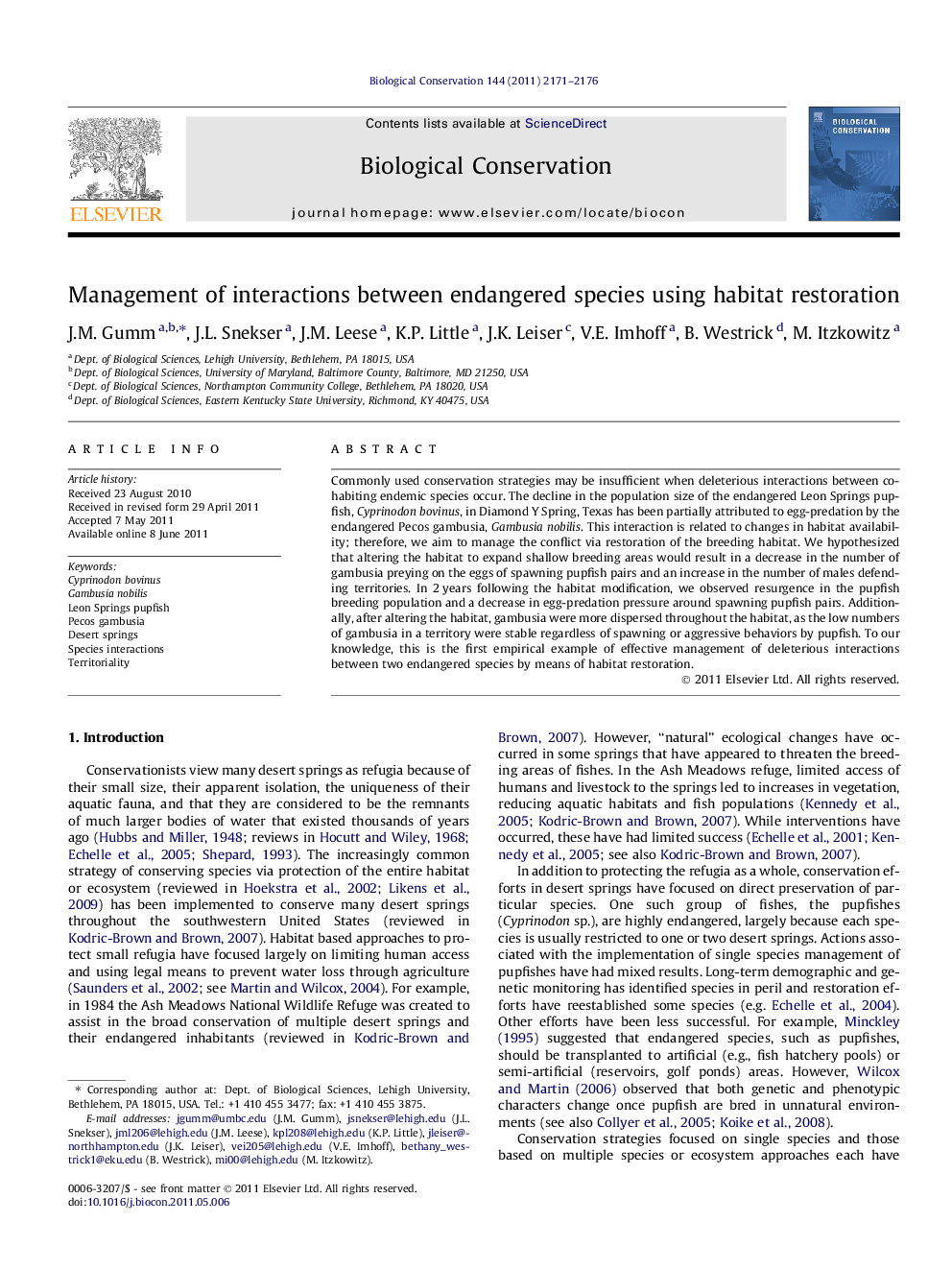| Article ID | Journal | Published Year | Pages | File Type |
|---|---|---|---|---|
| 4385536 | Biological Conservation | 2011 | 6 Pages |
Commonly used conservation strategies may be insufficient when deleterious interactions between co-habiting endemic species occur. The decline in the population size of the endangered Leon Springs pupfish, Cyprinodon bovinus, in Diamond Y Spring, Texas has been partially attributed to egg-predation by the endangered Pecos gambusia, Gambusia nobilis. This interaction is related to changes in habitat availability; therefore, we aim to manage the conflict via restoration of the breeding habitat. We hypothesized that altering the habitat to expand shallow breeding areas would result in a decrease in the number of gambusia preying on the eggs of spawning pupfish pairs and an increase in the number of males defending territories. In 2 years following the habitat modification, we observed resurgence in the pupfish breeding population and a decrease in egg-predation pressure around spawning pupfish pairs. Additionally, after altering the habitat, gambusia were more dispersed throughout the habitat, as the low numbers of gambusia in a territory were stable regardless of spawning or aggressive behaviors by pupfish. To our knowledge, this is the first empirical example of effective management of deleterious interactions between two endangered species by means of habitat restoration.
► We examine deleterious interactions between co-habiting endemic species. ► Increase in breeding population of pupfish after habitat modification. ► Decrease in egg predation by gambusia after habitat modification. ► Effective management of interactions between endemic species via habitat modification.
